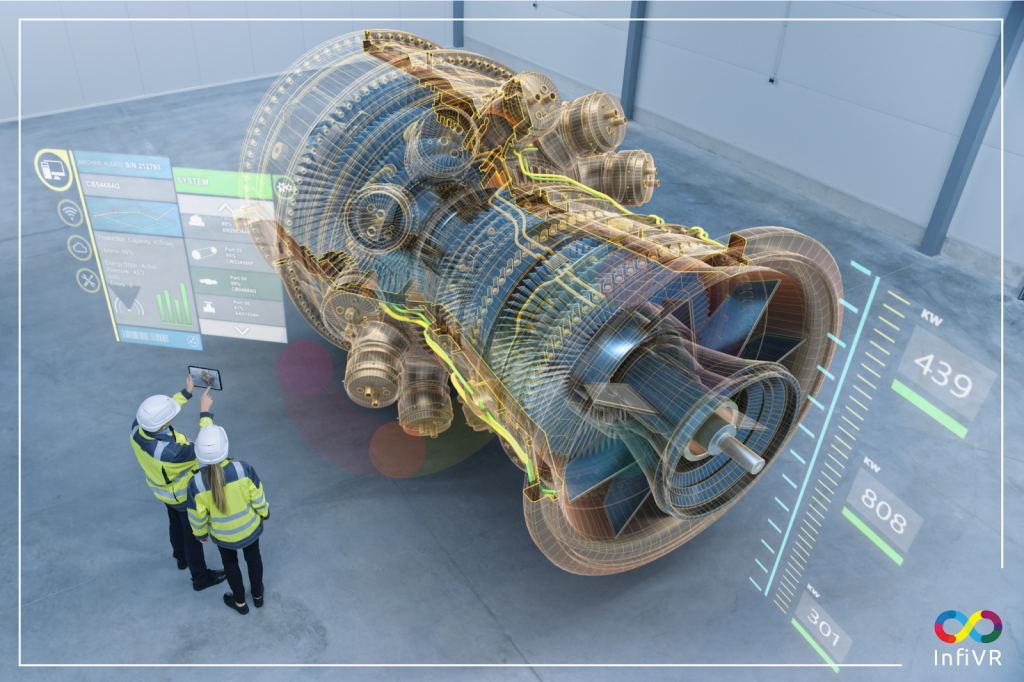VR training in the Aerospace Industry
In the high-stakes world of aerospace, training can be both challenging and costly. However, Virtual Reality (VR) is changing this narrative, making advanced training more accessible and affordable, thus enabling a wider audience to spread their wings in the vast expanse of the skies.
Assessing VR Training in Aerospace: A Comprehensive Exploration
This section delves into the various facets of assessing VR training in the aerospace industry. From flight training and maintenance to design manufacturing and even passenger entertainment, explore how VR is reshaping the training landscape in this dynamic and critical field.
2.1 Elevating Aerospace Training through VR
In the realm of flight training, VR technology has been instrumental in providing immersive experiences through 360-degree and full-motion VR headsets. Not only does this reduce the cost to the learner dramatically, but it also allows for repeated practice in simulated complex work environments, thereby enhancing performance. Assessing the effectiveness of this form of training can be gauged by the increased proficiency and readiness of the trainees to handle real-world scenarios.
2.2 VR as a Catalyst for Aerospace Engineering Education
VR has emerged as an indispensable tool for the training of aerospace engineers. Transitioning from traditional methods, this technology offers a risk-free environment where they can hone their skills to manage the unique challenges associated with space travel. Consequently, the practical knowledge and proficiency gained from this form of training can be assessed through the improved ability of these engineers to troubleshoot and problem-solve effectively in the field.
2.3 Design and Manufacturing through the VR Lens
VR technology is not confined to training alone. It plays a significant role in flight deck design, accessibility verification, and assembly planning in the aerospace industry. For instance, the ability to simulate cabins or jet functions allows engineers to design and test aviation parts and systems more efficiently. This kind of training is evaluated based on the speed, quality, and cost-effectiveness of the design and manufacturing processes.
2.4 Enhancing Maintenance Operations with VR
Maintenance operations can benefit enormously from VR, increasing the efficiency and safety of these critical tasks. Using VR simulations, maintenance teams can execute their duties faster and more effectively. The assessment of this VR training can be done through metrics such as a reduction in downtime, fewer errors, and an increase in operational efficiency.

2.5 Taking Passenger Entertainment to New Heights with VR
Leveraging VR technology, aerospace is actively enhancing the passenger experience, especially for those with flight anxiety. Notably, Air France employs VR headsets to deliver immersive entertainment, effectively improving the overall flight experience. The success of these initiatives is actively measured through ongoing passenger feedback and observed increases in customer satisfaction ratings.
2.6 Real-world VR Applications in Aerospace
Various organizations have started embracing VR in the aerospace sector. For instance, TAE Aerospace, the largest turbine-engine maintenance provider in Australia, won the Aerospace Australia Civil Industry Innovation award for its Fountx wearable technology. Developed in collaboration with CSIRO, this real-time audio-visual system enables on-site aviation technicians to collaborate remotely with product experts. This technology has significantly improved maintenance processes, making operations more efficient and effective.
On the entertainment front, Air France has been testing an “immersive entertainment system” for passengers using VR headsets in partnership with SkyLights. These headsets offer 3D and 2D films or television series, thereby enhancing the in-flight experience. Furthermore, the effectiveness of such innovations can be assessed through passenger feedback and satisfaction metrics.
With VR technology becoming increasingly prevalent in the aerospace industry, its benefits are manifold. From elevating the training process to improving operational efficiency, VR training initiatives are reshaping the aerospace industry. Additionally, these initiatives are enhancing the passenger experience, providing a comprehensive transformation in air travel. The methods used to assess these VR training programs offer valuable insights into their effectiveness, influencing the industry’s practices and shaping the future of aviation.
Explore more about Virtual Reality Training with InfiVR:
At InfiVR, we redefine industrial training with virtual reality simulation and immersive 3D gamification experience. Furthermore, InfiVR is proud partners to many Fortune 500 companies, and we’re here to transform your next-generation training visions into reality. Let’s collaborate to elevate your business by training! If you want to know more, get in touch with our consultation experts at hello@InfiVR.com.
Want to know more:
- What is Virtual Reality?
- What is Virtual Reality Training?
- What is VR Simulation?
- Advantages of Virtual Reality Training?
- Applications of Virtual Reality Training.
- Virtual Reality Maintenance Training.
- Virtual Reality Inspection Training.
- Virtual Reality Operational Training.
- Virtual Reality Assembly Training
- Virtual Reality Support & Servicing Training
- Various types of Virtual Reality Training Mediums.
- Virtual Reality based Experiential Training
- Operational Virtual Reality Training
- Virtual Reality based Behavioral Training
- Different Types of Environments in VR Training – 3D Virtual Environment.
- Mixed Reality Virtual Environment.
- Spatial Virtual Environment.
- 360* Photography-based Virtual Environment.
- VR Training in the Aviation Industry.
- VR Training in the Aerospace Industry.
- VR Training in the Defence Industry.
- VR Training in the Oil & Gas Industry.
- VRTraining in the Warehouse Industry.
- VR Training in the Manufacturing Industry.
- Hardware Selections for Virtual Reality Training
- How to adopt virtual reality training for your company?
- How to look for a suitable partner for Virtual Reality Training development?
- How to develop Virtual Reality Training POC?
- How to assess the effectiveness and advantages of Virtual Reality Training POC implemented?
- How to develop Virtual Reality Training for full-scale implementation?
- Survey forms for feedback capture on VRT
- How to successfully draft a VR training RFP?